Research
Our research topics (in loose order)
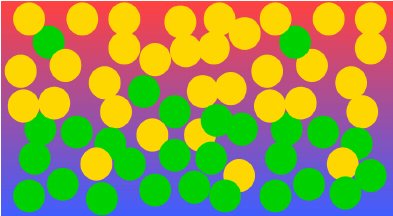
Thermodiffusion (Soret effect) A temperature gradient across a multicomponent fluid leads to a net mass flux and the build-up of a concentration gradient. This effect is known as thermal diffusion, thermodiffusion, or Ludwig-Soret-effect. It is described within the framework of nonequilibrium thermodynamics, where Onsager's phenomenological equations constitute a linear relationship between the thermodynamic forces and the fluxes of heat and matter.
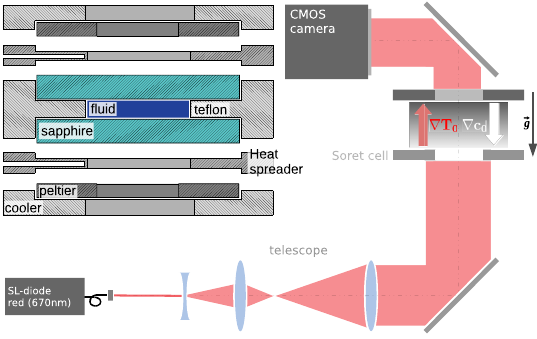
Non-equilibrium fluctuations In the presence of a macroscopic gradient of concentration and/or temperature, the thermodynamic variables exhibit non-equilibrium fluctuations that are drastically different from their equilibrium counterparts. Their intensity is strongly enhanced by several orders of magnitude and grows in particular for small wave numbers. On earth their amplitude is quenched by gravity, but in microgravity the limit is only set by the size of the container.
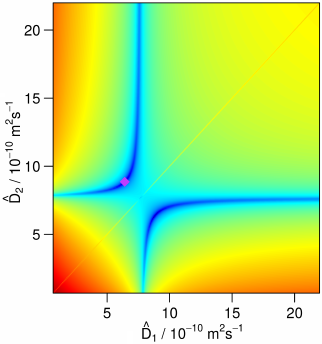
Ternary mixtures The complexity of diffusion and thermodiffusion processes in multicomponent liquid mixtures grows rapidly with the number of components. While non-isothermal binary mixtures are readily described by two independent coefficients, ternary mixtures already require six, reflecting the cross-coupling among all diffusion processes.

Microgravity We are members of several microgravity research projects aboard the International Space Station ISS. The DCMIX project aims at the measurement of diffusion and thermodiffusion in ternary mixtures. The NeufDix (Giant Fluctuations) project together with the ESA MAP project TechNes and the joint European and Chinese NESTEX project investigates giant fluctuations and non-equilibrium phenomena in soft matter and complex fluids. The ESA projects are supported by the DLR projects BTDCMIX3 and BTGIANT. Image courtesy of NASA.
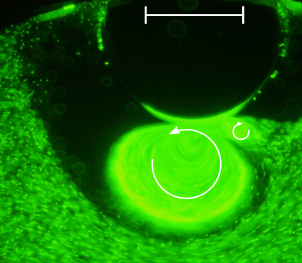
Marangoni convection in microfludic devices Marangoni convection along a liquid-gas interface within a microfluidic structure leads to a redistribution of sub-micrometer sized tracer particles and the formation of particle accumulation structures. Superposition of a Poiseuille flow allows for particle sorting according to their size.
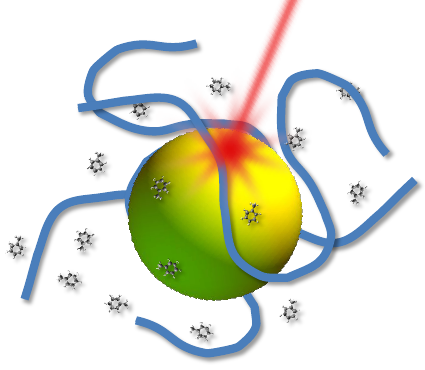
Optically heated colloids Metal colloids absorb laser radiation very efficiently and can be utilized as nanometer-sized highly localized heat sources. If dispersed in binary solvents, their temperature field couples to the order parameter of the mixture.
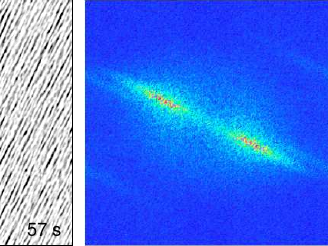
Light-induced interaction of ferrofluids Some ferrofluids can be 'glued' together by irradiation with visible light to form huge micrometer-sized aggregates which contain more than 107 colloidal particles. Once the light is switched off, the aggregates dissolve again. The mechanism of this fully reversible effect is not understood.
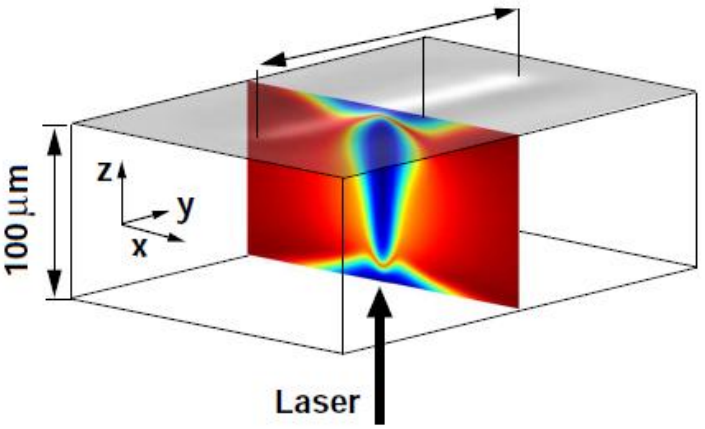
Critical polymer blends and forced spinodal decomposition At the critical point the correlation length of fluctuations diverges and a critical slowing down of diffusion is observed. At the same time the Soret coefficient increases by orders of magnitude and small temperature gradients are sufficient to induce very strong composition changes. Equilibrium phase diagrams loose their conventional meaning and laser heating allows for a controlled forcing of the demixing morphology.
